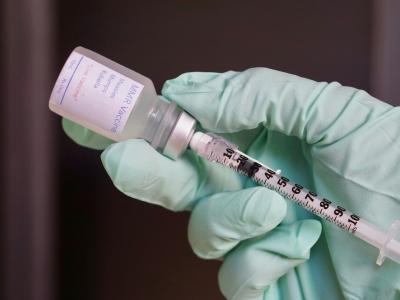CDC study finds sharp drop in outpatient antibiotics in first half of 2020
A new study by researchers from the Centers for Disease Control and Prevention (CDC) shows a substantial decrease in the number of outpatients who received antibiotic prescriptions during the first 5 months of 2020 compared with previous years.
In the study, published last week in Clinical Infectious Diseases, CDC researchers looked at data from the IQVIA Total Patient Tracker to estimate the monthly number of patients dispensed prescriptions for commonly used antibiotics from retail pharmacies from January 2017 through May 2020. They averaged estimates from 2017 through 2019 to create a baseline, and defined the percent change from January through May in each year as the seasonally expected change. They then calculated the percent change in January through May 2020 and compared it to the previous years.
The results of the analysis showed that from January through May 2020, the number of outpatients dispensed antibiotic prescriptions fell from 20.3 million to 9.9 million, exceeding seasonally expected decreases by 6.6 million patients and 33 percentage points. The largest differences were observed in April and May, when the number of patients receiving outpatient prescriptions was 39% and 42% lower, respectively, than the 2017-2019 averages for those months.
The largest beyond-expected decreases were observed in prescriptions for penicillins (2.3 million fewer patients), macrolides (1.5 million fewer patients), and cephalosporins (1.1 million fewer patients). Trends in azithromycin prescribing varied slightly, with the number of patients receiving azithromycin climbing by 5% from January through March 2020 and then declining by 71% from March through May. Beyond-expected decreases in dispensed antibiotics were observed across age groups, with the greatest decline occurring in children 4 and under and adults 65 and over.
The authors of the study say it's unclear at this point whether the decreases were driven by declines in non-COVID-19 disease transmission or changes in care-seeking related to the COVID-19 pandemic.
"Ongoing surveillance of antibiotic prescribing, antibiotic-associated adverse events, antibiotic-resistant infections, and complications of common infections is needed to evaluate the longterm impacts of these changes in outpatient antibiotic trends," they wrote. "Shifts in healthcare delivery, particularly the use of telehealth, are likely to be sustained, and should prompt assessment of effective antibiotic stewardship interventions to optimize antibiotic prescribing practices and ensure patient safety."
Dec 28 Clin Infect Dis abstract
More vaccine-derived polio cases, including first in Sierra Leone
Four countries reported new polio cases last week, all involving circulating vaccine-derived poliovirus type 2 (cVDPV2), including the first in Sierra Leone, the Global Polio Eradication Initiative (GPEI) said in its latest weekly update.
In the Middle East, Afghanistan reported 26 more cVDPV2 cases in 10 provinces, with 9 reported in Kandahar. The country has now recorded 240 such cases for 2020.
Three African countries also added to their cVDPV2 totals for the year. Sierra Leone reported its first three cases, one each in Western Area, Northern, and North Western provinces. Neighboring Guinea reported 7 more cases in five different provinces, raising its 2020 total to 36. And Nigeria reported a case in Sokoto state, putting its total at seven.
Dec 31 GPEI update
High-path avian flu strikes more poultry and wild birds in Asia, Europe
In the latest highly pathogenic avian flu outbreaks, South Korea and France reported more H5N8 outbreaks in poultry and several countries reported more detections in wild birds, according to the latest notifications from the World Organization for Animal Health (OIE).
South Korea reported 15 more outbreaks in poultry from six different provinces: Gyeonggi, North Chungcheong, North Jeolla, South Jeolla, South Chungcheong, and North Gyeongsang. The events began from Dec 20 to Dec 28 affecting commercial farms, mainly those housing ducks. Taken together, the virus killed 1,314 of 867,931 birds. South Korea also reported 15 more H5N8 detections in waterfowl in different parts of the country.
Taiwan reported two more outbreaks involving highly pathogenic H5N5, one at a layer farm in Changhua County and one at a goose farm in Yunlin County. Between the two outbreaks, the virus killed 5,200 of 35,384 birds. Taiwan has been battling H5N5 outbreaks in poultry since September 2019.
In France, agriculture officials reported 16 more poultry outbreaks involving H5N8, all of them on duck farms in Landes department in the southwest. The outbreaks began from Dec 22 to Dec 28, killing 26 of 59,625 birds. A handful of European countries also reported more detections involving wild birds, mostly H5N8 but also the European strain of H5N1 in the United Kingdom and H5N5 in Slovenia.
Dec 30 OIE report on H5N8 in South Korean poultry
Jan 3 OIE report on H5N8 in South Korean wild birds
Jan 4 OIE report on H5N5 in Taiwan
Dec 31 OIE report on H5N8 in France
Dec 31 OIE report on H5N1 in UK wild birds
Dec 31 OIE report on H5N8 in UK wild birds
Jan 4 OIE report on H5N5 in Slovenia











